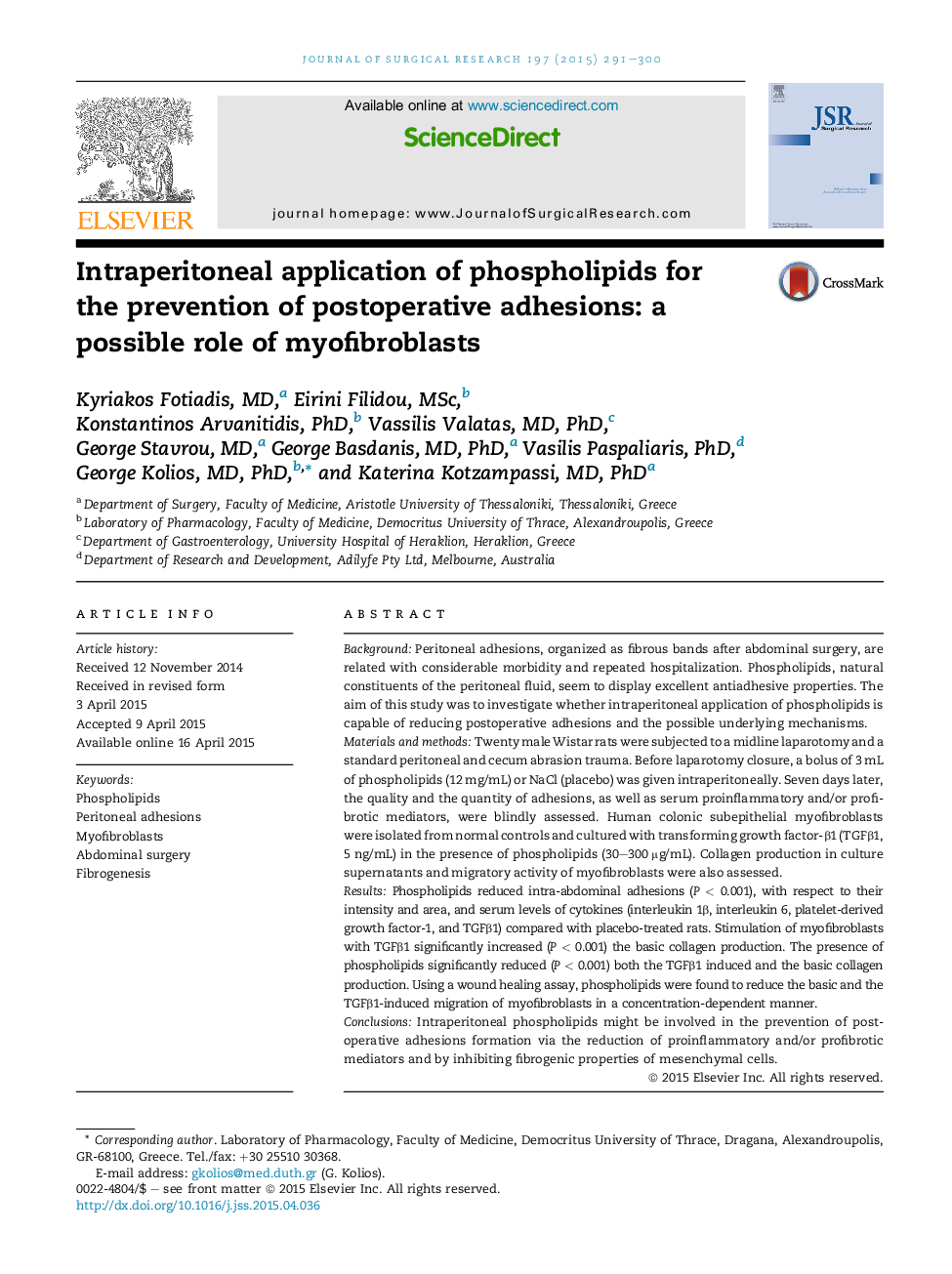| Article ID | Journal | Published Year | Pages | File Type |
|---|---|---|---|---|
| 4299760 | Journal of Surgical Research | 2015 | 10 Pages |
BackgroundPeritoneal adhesions, organized as fibrous bands after abdominal surgery, are related with considerable morbidity and repeated hospitalization. Phospholipids, natural constituents of the peritoneal fluid, seem to display excellent antiadhesive properties. The aim of this study was to investigate whether intraperitoneal application of phospholipids is capable of reducing postoperative adhesions and the possible underlying mechanisms.Materials and methodsTwenty male Wistar rats were subjected to a midline laparotomy and a standard peritoneal and cecum abrasion trauma. Before laparotomy closure, a bolus of 3 mL of phospholipids (12 mg/mL) or NaCl (placebo) was given intraperitoneally. Seven days later, the quality and the quantity of adhesions, as well as serum proinflammatory and/or profibrotic mediators, were blindly assessed. Human colonic subepithelial myofibroblasts were isolated from normal controls and cultured with transforming growth factor-β1 (TGFβ1, 5 ng/mL) in the presence of phospholipids (30–300 μg/mL). Collagen production in culture supernatants and migratory activity of myofibroblasts were also assessed.ResultsPhospholipids reduced intra-abdominal adhesions (P < 0.001), with respect to their intensity and area, and serum levels of cytokines (interleukin 1β, interleukin 6, platelet-derived growth factor-1, and TGFβ1) compared with placebo-treated rats. Stimulation of myofibroblasts with TGFβ1 significantly increased (P < 0.001) the basic collagen production. The presence of phospholipids significantly reduced (P < 0.001) both the TGFβ1 induced and the basic collagen production. Using a wound healing assay, phospholipids were found to reduce the basic and the TGFβ1-induced migration of myofibroblasts in a concentration-dependent manner.ConclusionsIntraperitoneal phospholipids might be involved in the prevention of postoperative adhesions formation via the reduction of proinflammatory and/or profibrotic mediators and by inhibiting fibrogenic properties of mesenchymal cells.
